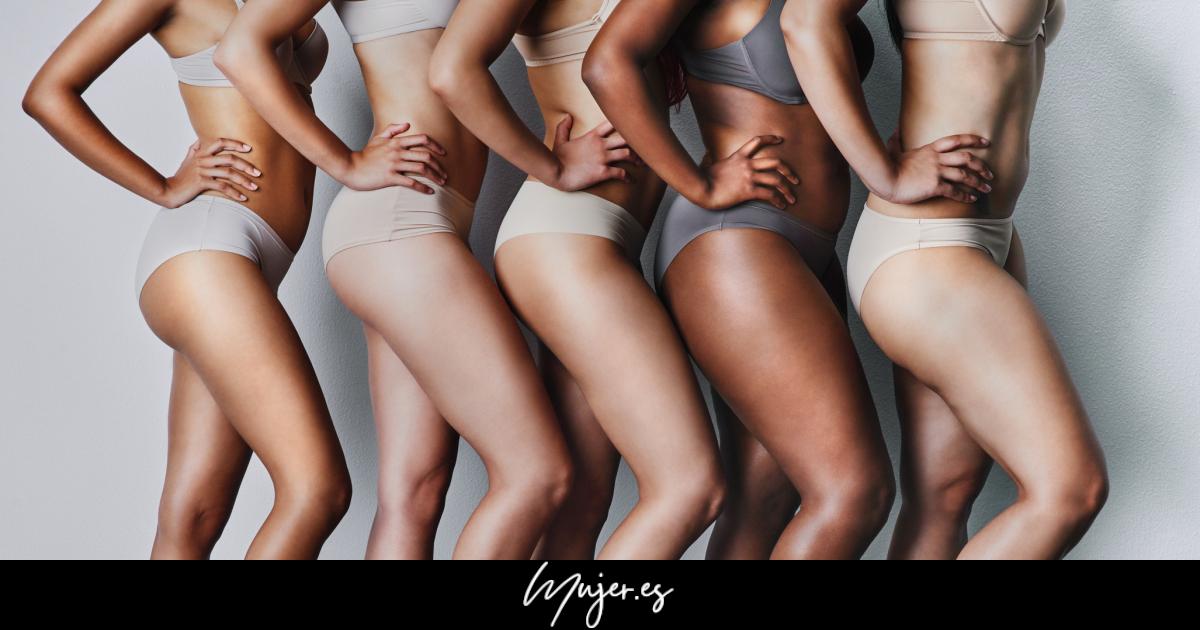[ad_1]
If you’re women and you have more than 25 years it is very likely that you have cellulitis. If you are a man, it is possible that you get rid of suffering from it, beware that it does not mean that you will not accumulate fat, it is just that yours will be tighter. According to dermatologist Alejandro Martín-Gorgojo, “cellulite affects 90% of women and it is located on the hips, thighs and abdomen”. For all of us to understand, Dr. Martín defines it as “the normal aspect of the skin that allows us to see the fat that is underneath, in the hypodermis, because it is looser. The fat slips between the connective tissue, pushes the subcutaneous tissue and creates the typical orange peel”. In the case of men, cellulite is practically non-existent “because their subcutaneous tissue is more compact, compared to that of women, which is more lax since it is prepared to stretch in case of pregnancy”, explains the doctor.
Losing weight does not end with her
Cellulite has nothing to do with being overweight, which is caused by the increase in the size of fat cells. One condition can be given without the other and vice versa. Doctor Rosa García Maroto points out: “There are thin women what are they presenting cellulitis due to lack of nutrients and disturbances of circulation. Lymphatic problems, genetics, a poor diet and a sedentary life have an influence.”
Cellulite is divided into degrees, specifically four, and they are very easy to set up. This is how Dr. Elia Roo explained them on her day:
- Grade 1: The skin appears smooth in a lying and standing position. When compressed, hardly any orange peel is observed.
- Grade 2: Smooth skin in both positions, when pinching the thigh the orange peel appears.
- 3rd grade: Smooth skin lying down, but with dimples in an upright position.
- Grade 4: Cellulite appears with or without clamping, standing and lying down. “This last stage is more frequent after the menopause.”

Creams smooth the skin
The physical reaction that gives rise to cellulite occurs at deep skin levels, in the hypodermisso to fight against it you have to get there. Can creams do it? Experts agree: no, but they help. According to plastic surgeon Xavier Santos, “cosmetics can help by moisturizing the skin and improving its elasticity.” For his part, Martín-Gorgojo explains: “The anti-cellulite creams have a combination of ingredients intended to decrease inflammation and the flaccidity of the dermis and, although the active ingredients used are encapsulated, it is very difficult for them to get to where they need to be to be effective. They can improve the texture of the skin temporarily”.
A study published in The Journal of Cosmetic Dermatology on the effect of topical caffeine (applied as a gel to porcine skin) concluded that “caffeine treatment (one of the most common ingredients in anti-cellulite creams) was effective when associated with ultrasound therapy to improve transport transdermal. Fatty tissue thickness was reduced.”
Do you want to receive the best beauty, fashion and lifestyle content in your email for free every Thursday? Sign up for our Newsletter.
[ad_2]
